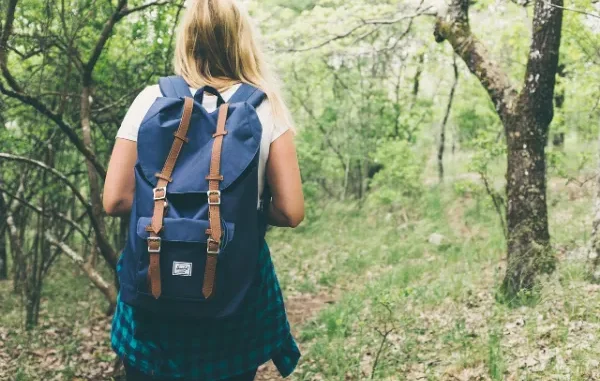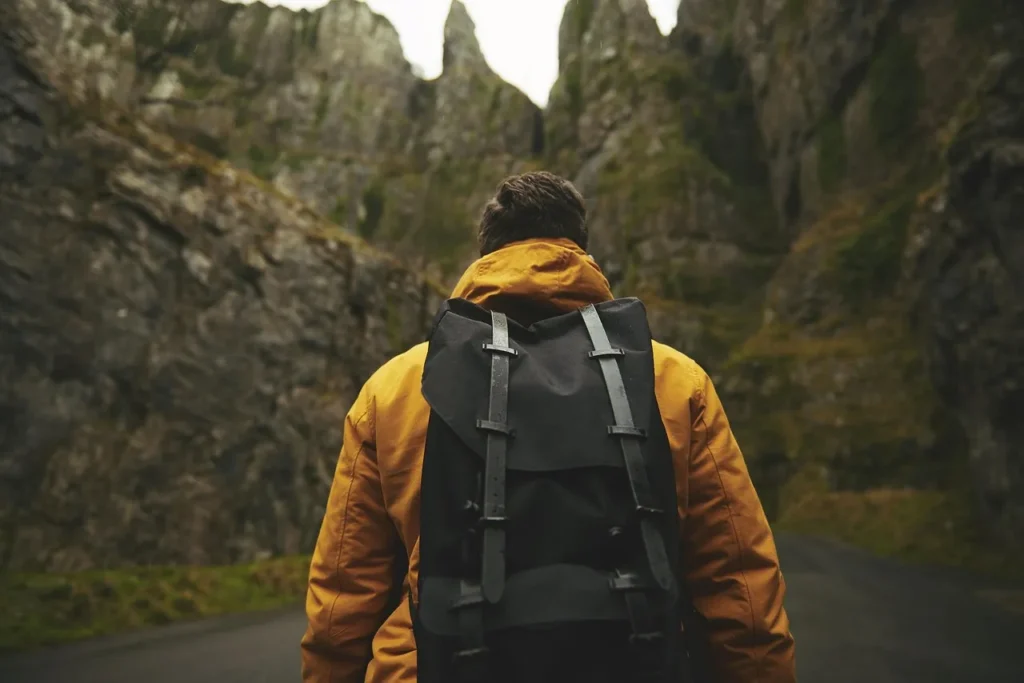
Backpacking opens up endless opportunities to explore the world with just a pack and tent on your shoulders. But heading out into the unknown for the first time can be even more challenging than choosing the most promising live betting lines, and for some, it can be truly nerve-wracking — it’s not always clear what to expect, what to pack, or how to keep a long-awaited adventure from turning into a nightmare. Here’s how to prepare for your first real hike.

If You’re Organizing the Trip Yourself
For a first trip, it’s best to start close to home — test your stamina, check your gear, and see how well your group works together. Jumping straight into a two-week trek in the Rockies or the Sierra Nevada is risky. That brand-new backpack might be uncomfortable, your hiking boots could turn your feet into blister zones, and your trusted friend might turn out to be not the easiest trail companion.
Here are some things to keep in mind when heading out with friends on your first overnight trip:
- Choose a local trail for 2-3 days with short daily hikes. Don’t plan anything extreme, like a nonstop 30-mile march. An ideal choice is a route through a national park with marked trails, designated campsites, and shelters spaced about every 6-7 miles. These places tend to be busier, meaning help is available if something goes wrong — whether you forgot a lighter, can’t start a fire, your tent leaks, or someone sprains an ankle.
- Plan how to get to the trailhead and back home. Check public transport schedules or arrange a car shuttle. Look up road conditions and parking availability ahead of time.
- Think about navigation. Mark rest and camping spots in advance. Download offline maps and plan your route based on your group’s abilities. You don’t need a Garmin right away — apps like Gaia GPS, OsmAnd, or Maps.Me work fine for beginners.
- Limit mileage. For a first trip, hiking more than 11 miles a day is too much. Plan around 7-9 miles instead, so you can enjoy the experience. Factor in elevation gain too — even 1,300 feet of climbing can feel tough for an untrained group.
- Decide who brings what gear. Renting is a great option for beginners — tents, sleeping bags, and pads can all be borrowed. Make sure everyone has a place to sleep but avoid unnecessary extras. For example, five people can share one three-person tent and one two-person tent; two three-person tents would be heavier and wasteful. If you prefer staying in shelters, book ahead, especially on holiday weekends.
- Plan your meals. Make a food list, shop together, and consider dietary restrictions or allergies. Decide if you’ll cook on a campfire or with gas stoves. Assign who brings cookware, axes, saws, or fuel.
- Check the weather. Prepare clothing and gear for temperature and rain. Double-check your sleeping bag’s rating: if nights dip to freezing and your bag is only rated to 45°F, you’ll need an extra insulating layer. Rain in the forecast? Bring a waterproof jacket or poncho. Remember, higher elevations are always colder — in May, Denver might be warm and dry, while nearby Rocky Mountain trails can still be snowy.
- Break in new hiking boots. Wear them for a half-day walk in the woods or at least around town. Pack proper hiking socks and extra blister bandages. Even in comfortable shoes, blisters are almost inevitable — be prepared.
- Pack a first-aid kit. At a minimum, bring painkillers, fever reducers, stomach remedies, bandages, and disinfectants like hydrogen peroxide or antibiotic ointment. Don’t forget personal medications you take daily.
- Add small but useful extras. A repair kit, needle and thread, and insect repellent don’t weigh much but make life on the trail easier.
- Train in advance. Jogging a couple of times a week, biking, swimming, or short hikes will help your body handle the load and make the experience more enjoyable.
- Set your mindset for adventure. Comfort will be lower than at home. Rain, campfire smoke, or heavy backpacks may test your patience. But the views, new experiences, and sense of achievement will outweigh the hardships. A mug of hot tea at home and one by the campfire after a long day are two completely different kinds of happiness.
If You’re Joining an Organized Group or Tour
If you don’t want to plan everything yourself or don’t have time, consider joining a group hike. These are often organized by local hiking clubs or private companies.
- Hiking club trips usually mean you’ll help with camp chores like cooking and setting up tents. Prices often just cover transport, food, and gear rental.
- Commercial tours cost more but include extras like private transport, a guide, a cook, and sometimes even a photographer. Activities can vary: summer trips might include kayaking, hiking, or biking, while winter ones could involve snowshoeing, skiing, or ice skating.
Here’s what to check before joining a tour:
- Ask about route difficulty and details. Share the link with family or friends so they know where you’ll be. The organizer should provide mileage and elevation gain. If the answers are vague and reviews are outdated, pick another company.
- Request a gear list. Professional organizers usually provide a detailed PDF before you even ask. Don’t hesitate to question specific items — experienced guides know what conditions to expect. If they recommend a down jacket despite warm weather in town, trust them.
- Clarify the food situation. If you have allergies or dietary needs, check if they can be accommodated or if you should bring some food yourself. Many tours plan vegetarian options, setting portions aside before adding meat.
- Ask about first aid. The guide should carry a proper medical kit and know how to use it.
Key Things to Remember
Whether you’re planning your own hike or joining a group, keep these rules in mind:
- Don’t overpack. A couple of extra pounds may feel like a rock in your backpack. Leave behind heavy luxuries like big bottles of shower gel, folding chairs, or hardcover books.
- Be prepared for changing weather.
- Let family or friends know where you’re going and when you’ll return.
- Keep your expectations realistic. Your trip won’t look like a travel blogger’s perfect photos, and that’s okay. Even a rainy hike or snowy mountain climb can become a cherished memory with the right mindset.
- Expect the unexpected. Something may go wrong, so think ahead about escape routes or ways to cut the trip short.






Leave a Reply